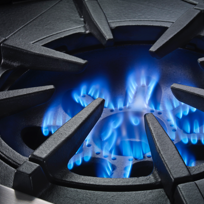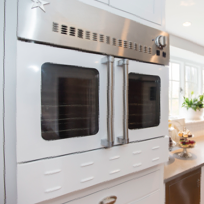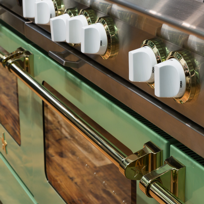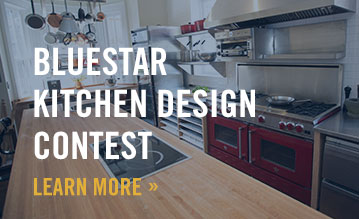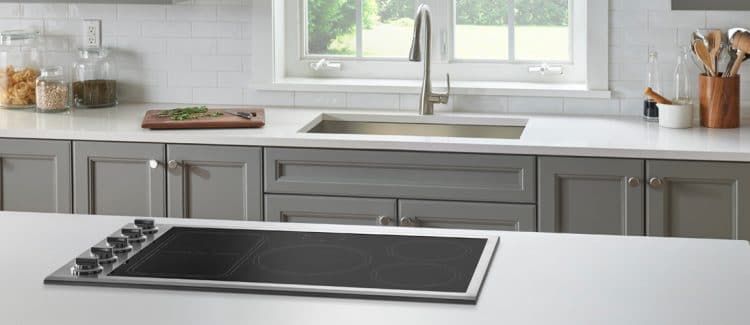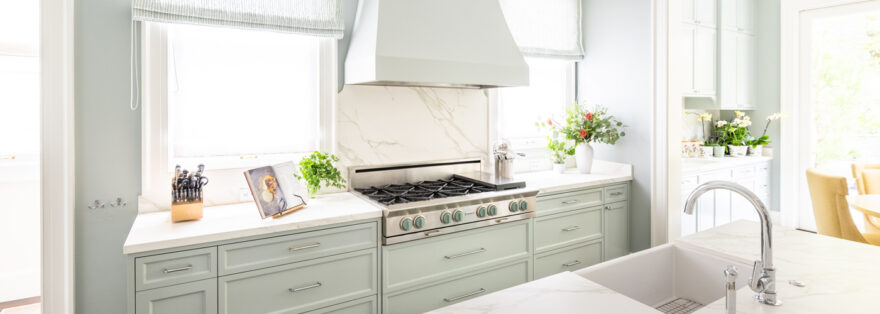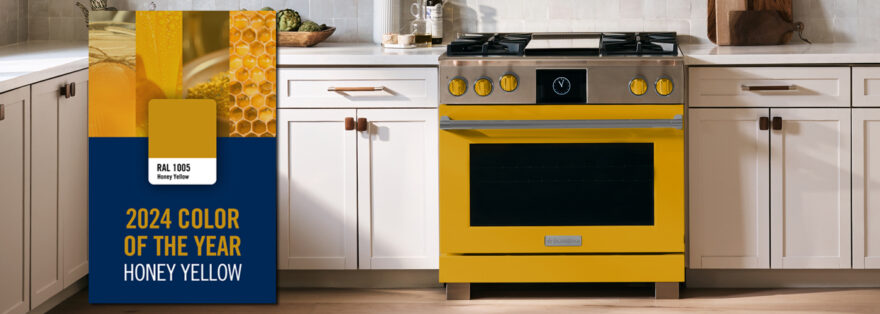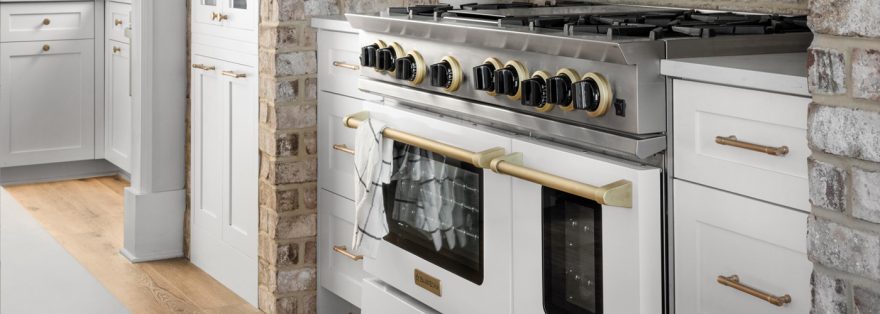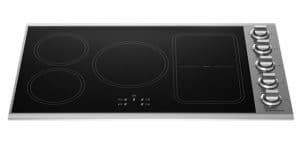 The most alluring feature of an induction cooktop is the shiny glass surface that wipes clean with the swipe of a sponge. Any cook who’s wrestled with boil-overs and splatters on a gas or exposed electric-coil cooktop (just about all of us) has had to deal with the ensuing mess. So, if we’re starting a list of induction cooktop pros and cons, let’s put a big check in the pro column for design.
The most alluring feature of an induction cooktop is the shiny glass surface that wipes clean with the swipe of a sponge. Any cook who’s wrestled with boil-overs and splatters on a gas or exposed electric-coil cooktop (just about all of us) has had to deal with the ensuing mess. So, if we’re starting a list of induction cooktop pros and cons, let’s put a big check in the pro column for design.
Induction is an energy-efficient alternative to electric. But instead of a coil, there’s an electromagnetic field sitting just below the glass surface. When the power is turned on, heat is generated to the cookware above, which is then transmitted to the food inside. The heat level that an induction cooktop can reach is staggering—the equivalent of 40,000 BTUs, while the average gas burner can only attain 20,000 BTUs. With induction, a large pot of water can achieve full boil in half the time that it takes with gas. That’s a check in the pro column for power.
Because the cooking process is faster and the energy from heating goes directly to the food and not to the area around it, induction wastes less energy. Statistics show that 84 percent of the energy from an induction cooktop goes directly to heat the food, while only 40 percent of the energy from a gas cooktop gets used to cook. (An electric cooktop’s efficiency is 74 percent.) Because of this efficiency, less ventilation is required—a definite plus for small spaces. The kitchen stays cooler, too: another check in the pro column.
Because there’s no flame or exposed coil, induction presents few safety hazards. This is a great advantage for those who are disabled or have small children at home. The cooktop itself never gets too hot and can be shut off very quickly. Even when the power is on, there will be no heat without the magnetic element of a pot to channel it. Safety: another check for pro.
Special magnetic cookware is required for induction. The current from the cooktop is transmitted to the vessel which cooks the food inside. In effect, the pot becomes the heat source. Let’s put a check in both the pro and con columns for ease of use for this reason—especially if a consumer has to buy all new cookware.
Induction cooking is not new technology. In fact, it was discovered in the late 1800s with the earliest patent dating back to 1909. It is hugely popular in Europe, where 90 percent of the cooktops are induction, as well as in Australia (mostly due to energy regulations).
At the 2017 Architectural Digest Design Show, major appliance manufacturers showcased their current induction models in high-end kitchen displays. Production is currently dominated by German manufacturers such as Bosch and Miele; however, the darling of the design show this year was Blue Star. The company’s American-made, customizable, commercial-grade induction ranges are available in a painter’s palette of hues—including 10 metal finishes—and feature colored knobs to feed the hungry American design market.
Celebrity chef Ryan Scott manned a Blue Star model at the show—deftly shifting the pans on its sleek surface to control the heat. Like most professional chefs, he said he was a “gas guy,” but still, he was loving the induction experience. He could almost instantaneously bring food from a boil to a simmer just by moving the pot. He said nothing cooked as fast, and it was a new and exciting experience for him to learn to cook this way. There can be a learning curve to capture the nuances of cooking on an induction range, however. It’s recommended to start your heat on a medium setting; you can then turn it up for a sear or boil, or down for a simmer. More good advice is not to walk away from the pot as you are learning to get used to the heat. Water boils in half the time and hard-boiled eggs take a new technique, but this is just all part of the process, and most people grow to love it.
What will turn the tide to bring more induction technology to the U.S. in significant numbers? Superior energy efficiency, reduction in price point (about $1,300 for a basic model, however a 36” with all the bells and whistles can soar to $5,000), phasing out of electric-coil cooktops and sexy features will all figure in.
By Michele Jacobson




